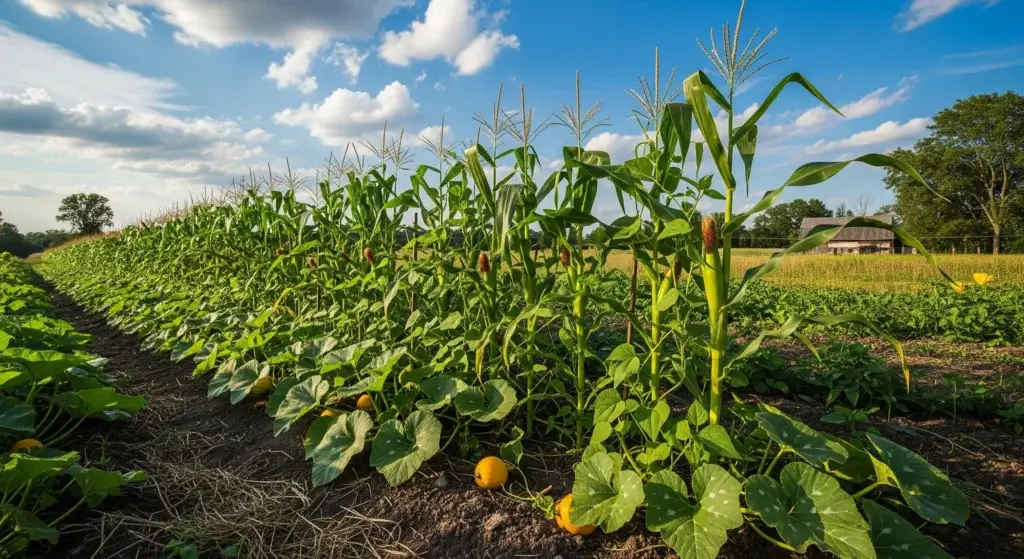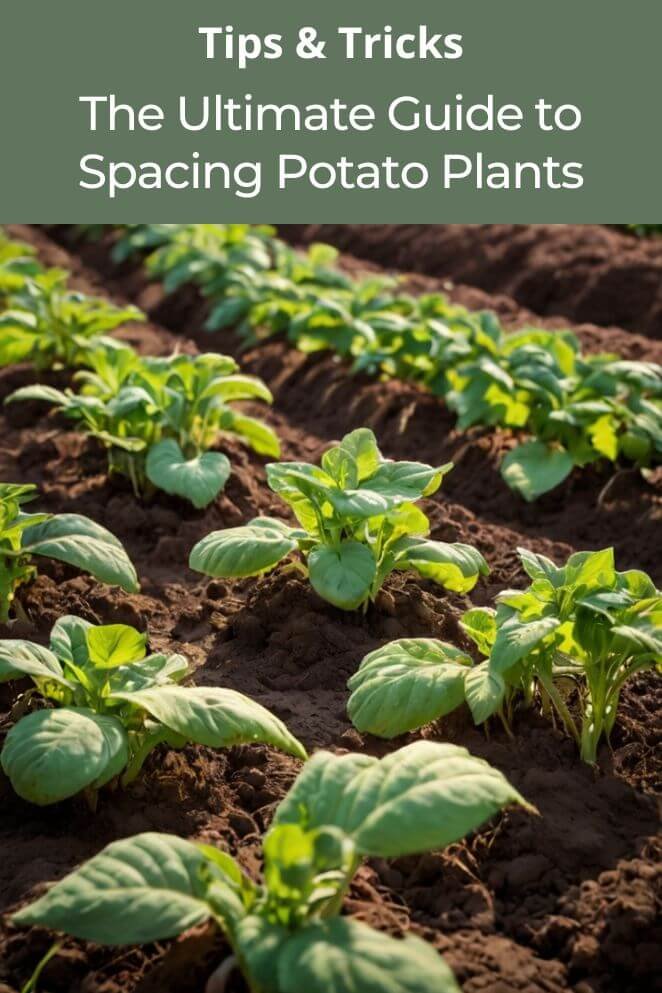
When it comes to growing potatoes, spacing is one of the most critical yet often overlooked aspects of gardening.
Properly spaced potato plants have room to develop strong roots and tubers, which ultimately leads to larger harvests.
On the flip side, overcrowding can cause issues like poor airflow, increased risk of disease, and stunted tuber growth.
In this post, we will break down the importance of potato plant spacing and how to tailor it to different growing methods and potato varieties.
Why Spacing Matters
Giving your potato plants the right amount of space is crucial for their growth and health.
When plants are too close together, they have to fight for sunlight, water, and nutrients, which can result in weaker plants and smaller potatoes.
Crowded plants also trap moisture, creating the perfect environment for diseases like blight to spread, especially in humid conditions.
With proper spacing, potato tubers have the room they need to grow larger and healthier underground.
It also makes your gardening tasks—like watering, hilling, and weeding—easier to manage.
Simply put, spacing your plants well leads to a stronger, more productive crop.
- Read also: The Ultimate Guide to Companion Plant for Luscious Potatoes
- Read also: Potato Watering Requirements: Keep Your Potatoes Healthy
Spacing for Different Growing Methods
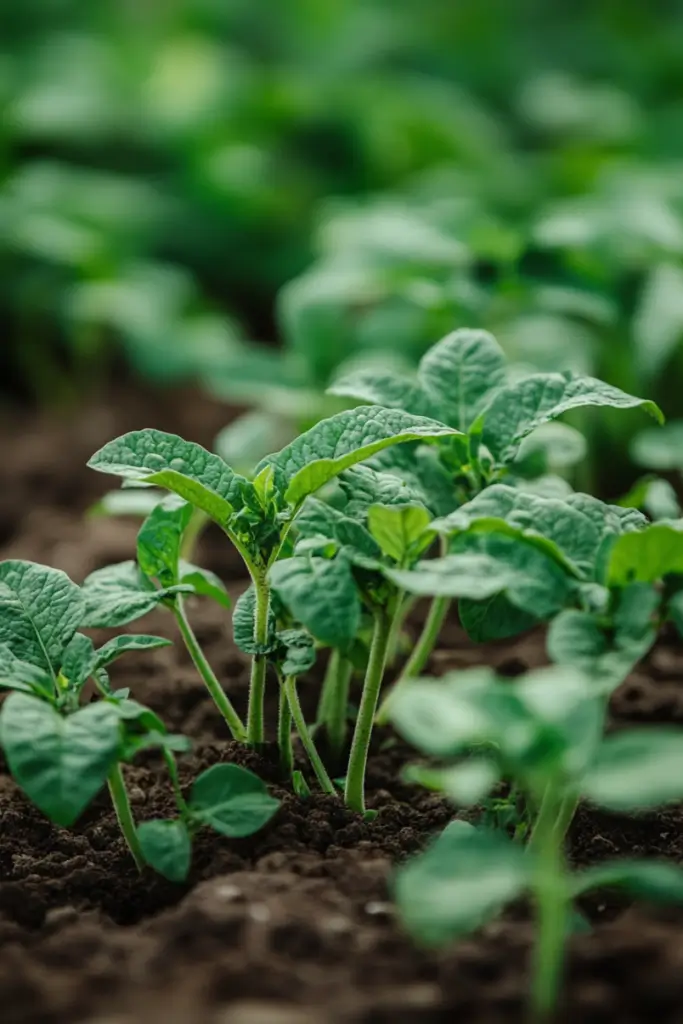
Potatoes can be grown using several methods, and each requires a different approach to spacing.
Let’s dive into some of the most common growing techniques and their recommended spacing guidelines.
In-row planting
Recommended spacing
When planting in rows, space your potato plants 12 to 15 inches apart, with rows spaced 2 to 3 feet apart.
Advantages
- Easier to manage large quantities of plants.
- Ideal for traditional garden setups.
- Allows for easy access between rows for hilling, watering, and harvesting.
Disadvantages
- Takes up more space in the garden.
- Requires more manual labor for hilling and weeding.
Hill planting
Recommended spacing
In hill planting, you mound soil over the potato plants as they grow, encouraging tuber production.
Plant your seed potatoes 12 inches apart in rows, with 30 to 36 inches between each row.
Advantages
- Helps to control weeds.
- Protects tubers from sunlight exposure, which can turn them green and toxic.
- Encourages the growth of more tubers per plant.
Disadvantages
- Requires frequent hilling to ensure that tubers are well-covered with soil.
- May take up more space compared to other methods.
Container planting
Recommended spacing
In containers, space can be more limited, but you should aim to plant 1 to 3 seed potatoes per container, depending on its size.
For a 10-gallon container, plant 1 to 2 potatoes, while larger containers can accommodate more.
Tips for maximizing space in containers
- Use deep containers to allow the potatoes to grow vertically.
- Add more soil as the plant grows to mimic the hilling method used in traditional planting.
- Choose compact potato varieties to make the most of limited container space.
Advantages
- Suitable for small spaces like patios and balconies.
- Easier to control soil quality and moisture levels.
- Protects plants from soil-borne diseases.
Disadvantages
- Limited space can restrict the number of plants you can grow.
- Containers dry out faster, so you’ll need to water more frequently.
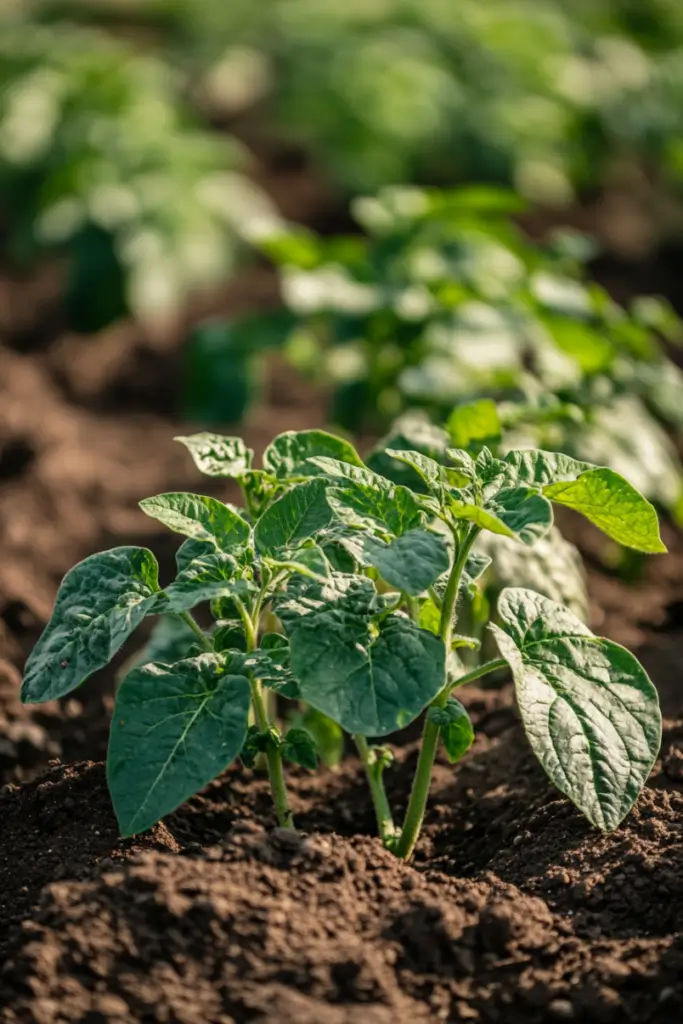
Spacing Based on Potato Variety
Different types of potatoes grow in their own unique way, so it’s important to give them the right amount of space.
Early-maturing varieties
Recommended spacing: 10 to 12 inches apart
Early-maturing potatoes, like ‘Yukon Gold’ and ‘Red Norland,’ are compact and grow quickly.
Because of their smaller size and faster growth, they don’t need as much space as other varieties, making them a great choice if you’re working with limited garden space.
These plants produce tubers more quickly, which means you can harvest them sooner.
Mid-season varieties
Recommended spacing: 12 to 15 inches apart
Mid-season potatoes, like ‘Kennebec’ and ‘Purple Majesty,’ are a little larger than early varieties.
They need a bit more room to grow, which is why spacing them 12 to 15 inches apart gives them the space to develop bigger, healthier tubers.
They take a little longer to mature, so giving them that extra room helps ensure a good harvest.
Late-season varieties
Recommended spacing: 15 to 18 inches apart
Late-season potatoes, such as ‘Russet Burbank,’ are the largest of the bunch and take the longest time to mature.
These varieties need the most space—15 to 18 inches between each plant—so their tubers can fully develop.
The longer growing time also means that these plants tend to spread out more, so the extra room is essential for a successful crop.
Determinate vs. indeterminate potatoes
When thinking about spacing, it’s also useful to consider whether your potato variety is determinate or indeterminate.
Determinate potatoes
Determinate potatoes (most early-season varieties) grow in a compact way and only need to be “hilled” (the process of piling soil around the base of the plant) once during the season.
These plants stay relatively short and don’t spread much.
Indeterminate potatoes
Indeterminate potatoes (mostly late-season varieties) keep growing as long as you continue hilling them.
This type needs more space and regular hilling to encourage more tubers to form.
These potatoes grow tall and keep producing as the season progresses, so extra space is crucial to support their growth.

Tips for Optimal Spacing
Getting the spacing right when planting potatoes is key to growing healthy, productive plants.
Here are some practical tips to help you space your potatoes for the best results:
Using a planting guide or template
Using a planting guide or a simple template can help you space your potatoes evenly.
This ensures that each plant gets the right amount of room to grow, improving airflow and making sure they all have access to nutrients.
Avoiding overcrowding
It’s tempting to plant as many potatoes as possible in a small space, but overcrowding can actually hurt your harvest.
When plants are too close, they compete for light, water, and nutrients, resulting in smaller tubers.
Overcrowding can also increase the chances of disease. Stick to the recommended spacing to help your potatoes thrive.
Considering future growth and expansion
Remember that potatoes grow both above the soil and below.
As the plants get bigger, their leaves will spread, and the tubers underground will need space to expand.
When planting, think about how much space the plants will take up once they mature, and give them enough room to grow without being cramped.
Adjusting spacing as plants grow
Sometimes, plants grow more vigorously than expected.
If your potato plants seem crowded as they develop, consider thinning them out or adjusting how you hill them.
This ensures that each plant has enough space to continue growing strong, healthy tubers.
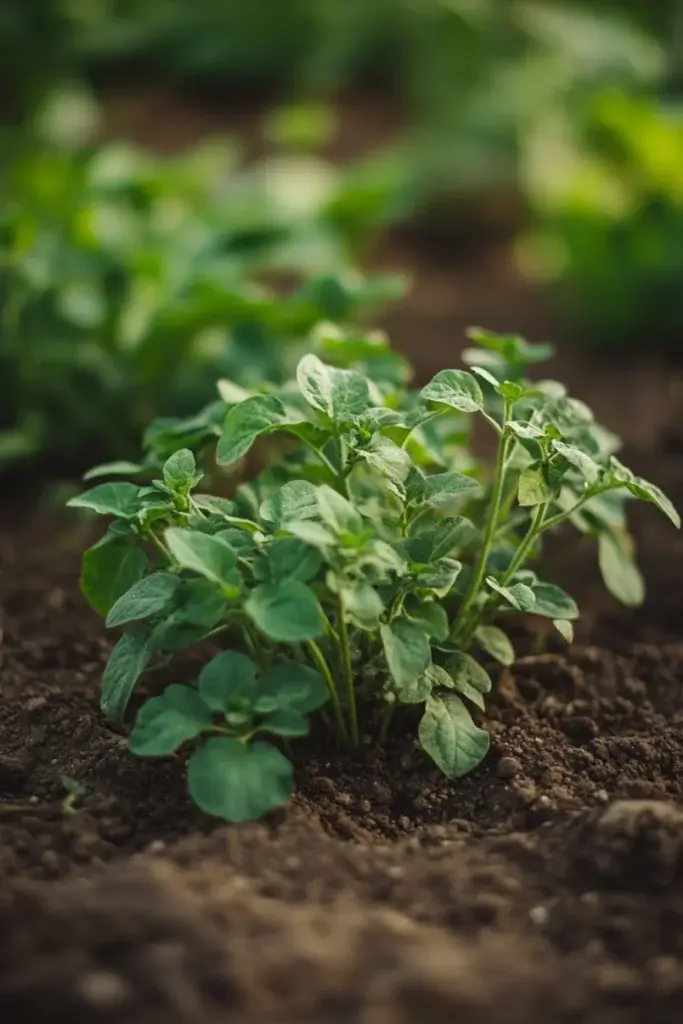
- Read also: The Ultimate Guide to Preparing the Perfect Soil for Potatoes
- Read also: When to Fertilize Potatoes: A Comprehensive Guide for Optimal Growth
Final Thoughts
Proper spacing is essential for growing healthy, productive potato plants.
By taking into account the growing method, variety, and available space, you can ensure your potatoes have the room they need to thrive.
Whether you’re planting in rows, hills, or containers, following these spacing guidelines will help you achieve a bigger and better harvest.



